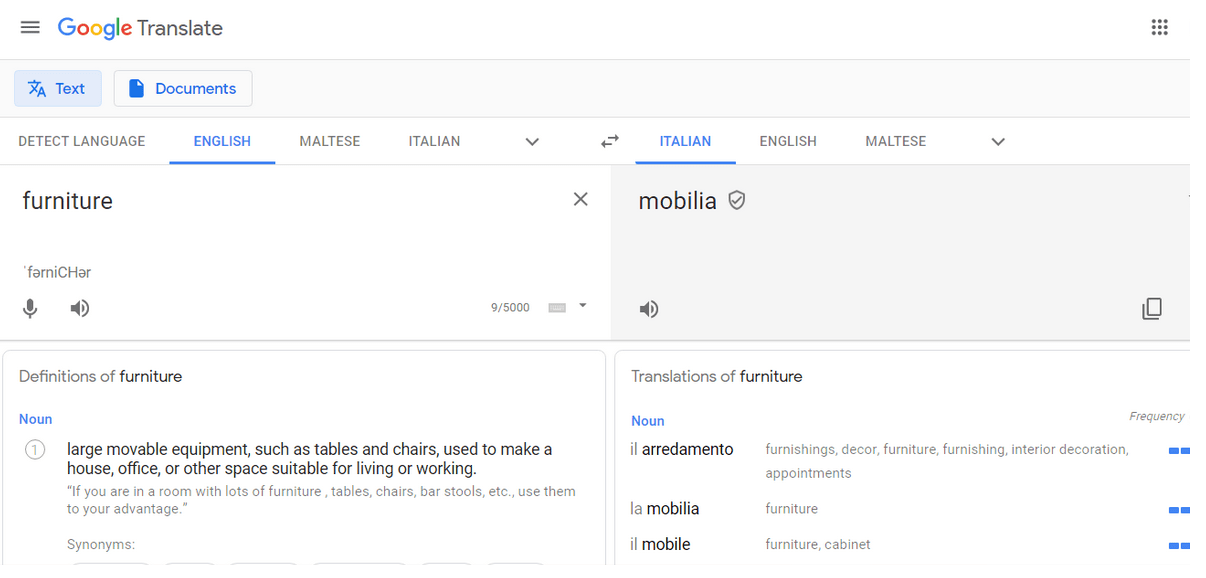Google is by far the most formidable virtual entity on the planet. Omnipresent, all-powerful, and a constant sidekick to most of our phone-wielding generation, the idea of surviving without it is almost inconceivable. From solving family arguments, to predicting the weather, to providing users with a barrage of information, the usefulness of this giant of a search engine is undeniable.
The internet reaches to all corners of the planet, and Google is of course instrumental in breaking down communication barriers. One of the greatest modern communication barriers is, quite obviously, language. This is where Google Translate comes in.
What is Google Translate?
You’d have to be living under a rock not to have heard of Google Translate. But, in case you actually do (there are people living in stranger places, after all), here’s a little summary.
Google Translate is a free machine translation service available to over 500 million web users from all over the world. It runs on advanced AI technology to translate text from one language to another and currently supports over 100 different languages. This is possible due to the search engine’s access to billions of web pages. Tons of data is crawled within milliseconds and, a heartbeat after pressing Enter, Google will have retrieved what it believes to be the best possible translation for its inputted word or phrase. It even provides users with a definition of that word or phrase, as well as suggestions for similar words in both languages, as illustrated below:
Useful, you might be thinking, is an understatement. Especially when you consider that even some of the more obscure languages like Yiddish and Urdu are included. Which makes my identity as a bilingual writer almost laughable in its comparatively narrow scope. Moreover, this handy tool is constantly available at your fingertips, as users can access it from any iOS or Android mobile device without having a Google account.
Kept in translation?
If you’re a writer or translator, though, you’ll know that the present is not all bright for Google Translate. This despite the introduction of a more advanced neural machine translation (NMT) system announced on Google’s AI blog in September 2016. The system allows for what is loosely termed ‘deeper’ AI technology, where what is deemed as the best translation is given as a whole rather than in parts. In simpler words, translation is not made word by word as in a simple decoder. Rather, the system takes whole sentences and even paragraphs at a time in order to produce more relevant translations by seeking broader contexts. This way, translated text is smoother and can be read more naturally.
Let sleeping dogs lie
But we still think there’s a long way to go before Google Translate can match human translators. As a bilingual writer, I’ve experienced first-hand laughable but sometimes fatal inaccuracies at the hands of this tempting translating siren. The subtleties and complexities of figurative human language are impossible to be picked by what is, after all, no more than a mere machine. A case in point is my heading, which I attempted to translate into my mother tongue (Maltese):
The result is far removed than what it should be (Kelb rieqed la tqajmux, in case you’re wondering). The system has even gone so far as treating the adjective “sleeping” as a noun, rather than an adjective, and produced a completely different verb (jinsabu) that is completely irrelevant to the context.
Final thoughts
No matter how ‘deep’ Google Translate’s learning is claimed to be, uploading and translating whole documents seamlessly remains highly doubtful. Which means that, once again, us writers can heave a sigh of relief and go back to viewing technology as a tool rather than a threat.
And, if you’re looking for translators, you’re in the right place! Have a look at our (human) translation services or contact us today for a quote.







